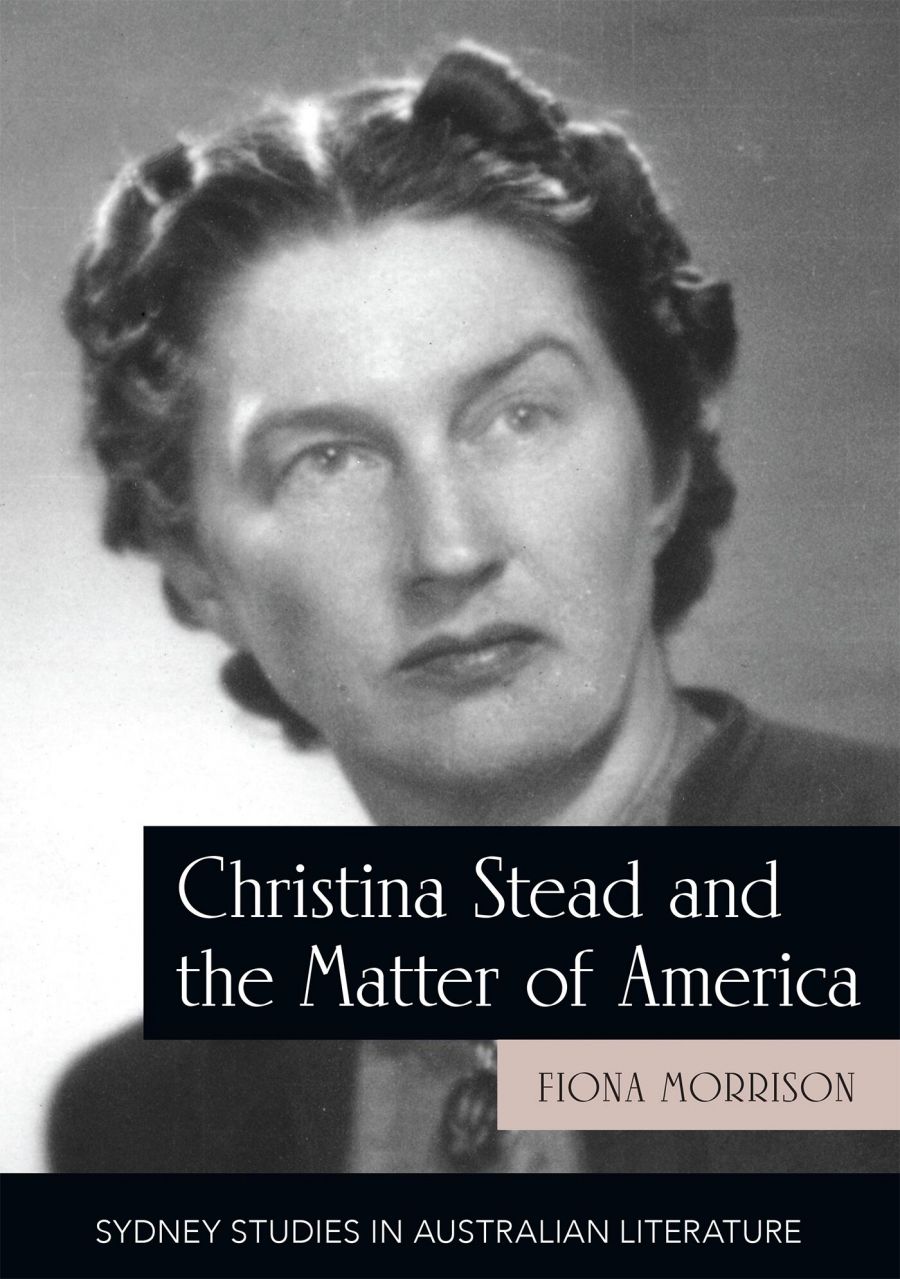
- Free Article: No
- Contents Category: Literary Studies
- Review Article: Yes
- Custom Highlight Text:
In spite of the hundreds of scholarly articles, dozens of monographs, and two biographies on the life and work of Christina Stead (1902–83), critics, curiously, have not generally sought to divide up Stead’s career into her Australian, European, and American periods for the purposes of their analysis. Most of them have regarded her career as more integrated, recognising the fact that Stead responded to all the places in which she lived and that her interest in the people around her drove her approach to her work, informed her settings, and nourished her understanding of ideology and its impact on human behaviour. In this compact study of five of Stead’s novels, Fiona Morrison seeks to explore Stead’s particular interest in American politics and culture and their specific influence on her writing.
- Grid Image (300px * 250px):

- Book 1 Title: Christina Stead and the Matter of America
- Book 1 Biblio: Sydney University Press, $45 pb, 186 pp
 Christina Stead (photograph via Text Publishing/National Library of Australia)
Christina Stead (photograph via Text Publishing/National Library of Australia)
Stead is one of the great authors to emerge from Australia in the early twentieth century. Her fiction continues to absorb scholars and to divide them, although her novels are not widely read. Morrison’s monograph follows a recent comprehensive study by Michael Ackland, which documents Stead’s life, her education, and her sustained political engagement and political values. Ackland points out that, because she was not a US citizen, Stead was prevented from joining the Communist Party of the United States of America in the late 1930s while living in New York City with her de facto husband, Bill Blake. This may have liberated Stead from being too easily labelled or identified for her socialist leanings. Later in her life, Stead sought to allay any easy association of her work with her communist sympathies. Ackland works through what he calls Stead’s ‘literary subterfuge’ as a response to both her strong and unwavering commitment to the left and the pressure of conforming to the party line. Stead’s fascination with US political culture, and more particularly with characters who embodied warring ideological convictions, is broadly the subject of Morrison’s analysis.
This monograph is at times microscopic in its focus is rather narrow in its overall conceptual framework and in its approach to Stead’s American fiction. Morrison shies away from new arguments, timidly following the line of one or two others: she states at the outset that she is ‘echoing David Malouf (1982) and Margaret Harris (1992)’, thereby ignoring much of the scholarship on Stead, even Ackland’s account of Stead’s socialist pedigree and its detailed analysis of her fiction up to her first American novel, Stead’s best-known work, The Man Who Loved Children (1940). Morrison offers two chapters of discussion on this novel without reference to Ackland’s analysis, except to note its existence in her introduction. It is a pity that Morrison has missed the opportunity to engage with recent scholarship, as this diminishes any sense of the range and depth of the field. The other problem is that she offers no clear rationale for the study: its stated premise is that ‘Stead arrived in the United States as a committed, if experimental and deeply original, mid-century realist’. Morrison overlooks questions about how Stead’s American experience shaped her writing and implies that she came to the United States fully formed as an author. Notwithstanding this criticism, this short book offers some insights into Stead’s American odyssey and makes a case for considering The Man Who Loved Children the first of her American novels; Morrison invokes several American critics in support of this view.
Morrison settles on the term ‘fellow traveller’ to characterise Stead’s political identity, arguing that this allowed her both ‘stability and literary energy’ up until the late 1940s, and that capitalism in the United States offered an ‘irresistible subject’. Morrison categorises the American fiction as domestic (The Man Who Loved Children), picaresque (Letty Fox: Her Luck, 1946), and even a tragedy (I’m Dying Laughing, 1986), a novel also categorised in this study as a chronicle. She avoids reading the novels as satires, as other critics (including myself) have done.
For me, the discussion of the mode and scope of the writing is not convincing in the introductory remarks or in the chapters that offer close analysis of the texts. Morrison overlooks the performative, experimental, self-consciously artful style and political colour of Stead’s American novels. She acknowledges that Stead’s broader project is one in which she offers ‘catalogue and critique’, referring to her massive last, unfinished novel, I’m Dying Laughing, as a ‘tragi-comic chronicle’. Morrison focuses on what she regards as Stead’s original ‘vision of gender and American identity’ in spite of Stead’s many attempts in interviews to distance herself from women’s liberation movements and feminist ideology. She homes in on Stead’s ‘keen and iconoclastic interest in the American girl’ in The Man Who Loved Children and in Letty Fox, recognising Stead’s affinity for realism and her pursuit of a portrayal of lives as they are, with the author noting Stead’s avid attention to the ‘theatre of gender relations’ in all of Stead’s American novels.
Stead paid a high price for her expatriate life: constantly on the move, for many years unrecognised by critics and living on a small income. She left Australia as a young woman of twenty-six, and did not return until 1974, when she was seventy-two. She also paid a high price for her internationalist ideals. It is a delightful paradox that she could write wherever she was living. Morrison’s book further develops an understanding of the American years and of Stead’s profound engagement with the nation in a critical period of history.


Comments powered by CComment